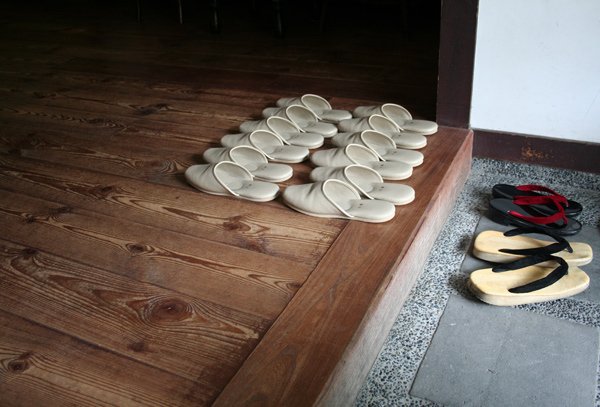
In Japan, as in many cultures, it is considered disrespectful to fail to remove shoes before entering a home. This practice, while at one time a practical necessity, has long become tradition and is common in many parts of the world, including Hawaii. While the reasons for swapping shoes for slippers before entering the home have changed, the result is still a cleaner floor.
Significance
When traveling to countries with different traditions and cultures other than your own, it is important to remember to be considerate and respectful of those traditions and their significance to the culture you are visiting. In Japan, it is considered very disrespectful to wear shoes inside of a home and, in some cases, businesses as well.
The Reason Why
According to some sources, the tradition of removing shoes is related to the climate of Japan. As it is a country that experiences heavy rainfall, roads and sidewalks are often wet and muddy. To track this muddy mess into another's home would be less than thoughtful if the visitor understood that many Japanese use rooms for more than one purpose; for example, futons may be laid on the living room floor at night for sleeping.
In Practice
Remove your shoes when in the genken, or entryway, to a home. In practice, remove your shoes so that you are still pointing in the direction in which you entered the home. Then kneel and turn them around and move them to the side to allow easy access to the door for anyone else who may be arriving. It is important to note that in Japanese culture it is a sign of disrespect to show your back to your host.
Once Inside
Generally, a pair of house slippers will be waiting nearby for you to put on when in the home. Even the house slippers must be taken off to step on to tatami, or floor mats, in the home to protect them from damage and dirt. Additionally, when using a restroom, house slippers are removed and a different pair, just for using the restroom, are used.
In Other Cultures
Removing one's shoes at the door as a sign of respect to a host is not a tradition confined to Japan. It also exists in Thailand and the Czech Republic and has migrated into many Western countries.
